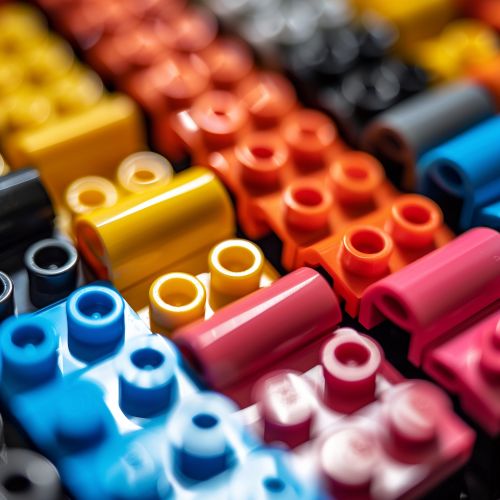LEGO
History


LEGO, a line of plastic construction toys, was created by the Danish company The LEGO Group. The company was founded on August 10, 1932, by Ole Kirk Christiansen. Initially, the company produced wooden toys, but in 1949, it began producing the now-iconic interlocking plastic bricks. The name "LEGO" is derived from the Danish words "leg godt," meaning "play well." The LEGO Group's motto is "Only the best is good enough," reflecting its commitment to quality.
The modern LEGO brick design was patented on January 28, 1958. The unique design of the bricks, with their interlocking tubes, allows for a wide variety of combinations and constructions. This innovation has been a key factor in LEGO's enduring popularity.
Design and Engineering
LEGO bricks are made from a strong, durable plastic known as acrylonitrile butadiene styrene (ABS). The precise manufacturing process ensures that each brick fits perfectly with others, maintaining a high level of consistency and quality. The design of LEGO bricks allows for a high degree of modularity, enabling users to create complex structures and models.
The engineering behind LEGO sets involves extensive planning and testing. Designers use computer-aided design (CAD) software to create detailed plans for each set. Prototypes are built and tested for stability, playability, and safety. The LEGO Group also employs a rigorous quality control process to ensure that each brick meets exacting standards.
Educational Value
LEGO has long been recognized for its educational value. The toys encourage creativity, problem-solving, and fine motor skills. In recent years, LEGO has expanded its educational offerings with the introduction of LEGO Education sets, which are designed for use in classrooms. These sets cover a range of subjects, including science, technology, engineering, and mathematics (STEM).
LEGO Mindstorms, a line of programmable robotics kits, has been particularly influential in STEM education. Mindstorms kits allow users to build and program robots, providing hands-on experience with robotics and computer programming. These kits are used in schools and robotics competitions around the world.
Cultural Impact
LEGO has had a significant impact on popular culture. The toys have been featured in numerous films, television shows, and video games. The LEGO Movie, released in 2014, was a major success and led to several sequels and spin-offs. LEGO sets based on popular franchises, such as Star Wars, Harry Potter, and Marvel, have also been highly successful.
The LEGO fan community, known as Adult Fans of LEGO (AFOL), is a testament to the brand's enduring appeal. AFOLs create intricate and impressive models, often showcasing their work at conventions and exhibitions. The LEGO Group has embraced this community, collaborating with fans on special projects and sets.
Environmental Initiatives
In recent years, the LEGO Group has made significant efforts to reduce its environmental impact. The company has committed to using sustainable materials in its products and packaging. In 2018, LEGO introduced its first elements made from plant-based plastic, derived from sugarcane. The company aims to produce all core products from sustainable materials by 2030.
LEGO has also invested in renewable energy. The company achieved its goal of balancing 100% of its energy use with renewable energy sources in 2017. This was accomplished through investments in wind farms and other renewable energy projects.
See Also
- Modularity
- Creativity
- Science
- Technology
- Engineering
- Mathematics
- Robotics
- Computer programming
- Star Wars
- Harry Potter
- Marvel
